Molds and Casts
| Molds are formed when an organism leaves an impression in the sediments
|
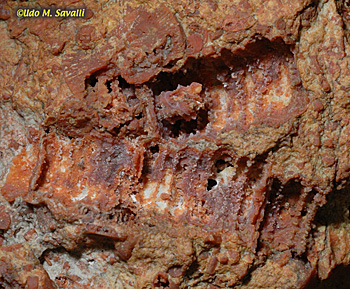
|
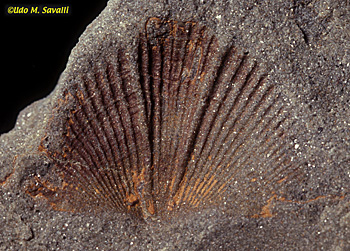
|
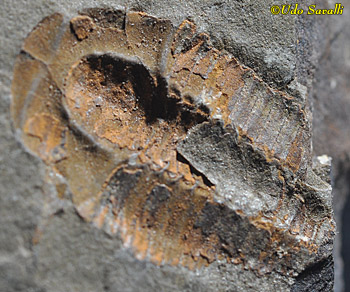
|
|
Mold of crinoid (sea lily) stems. Sea lilies are primitive relatives of sea stars that have a long stalk
|
Mold of a brachiopod shell. Brachiopods are superficially similar to clams and scallops, but unrelated and with a differnt internal anatomy
|
Mold of a trilobite (with some mineralization to produce the surface color). (Although it forms a depression in the matrix, it might look raised due to an optical illusion)
|
Casts are formed when sediments fill a mold and thus take on the shape of the original organism
|
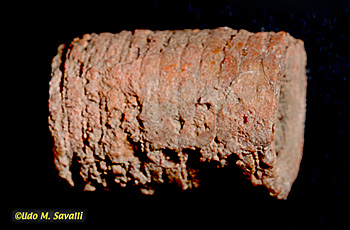
|
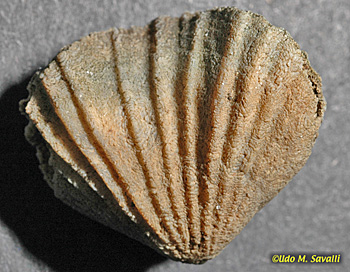
|
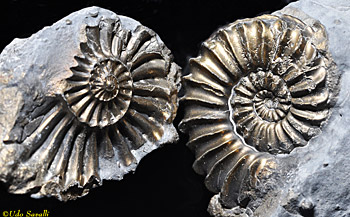
|
|
Cast of a section of crinoid (sea lily) stem
|
Cast of a brachiopod shell
|
Two parts of an ammonite fossil showing both a mold (left) and a cast (right) (with additional mineralization producing the gold color)
|
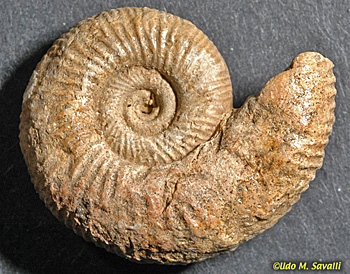
|
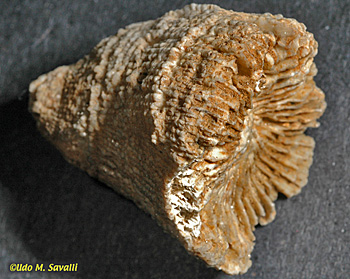
|
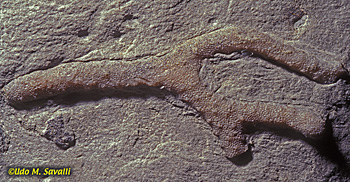
|
|
Cast of a Perisphinctes ammonite shell (extinct relatives of octopus and squid)
|
Cast of a horn coral (an extinct group of corals)
|
Cast of a bryozoan (a colony of tiny coral-like animals)
|
Internal molds form when sediments fill the interior spaces of a shelled animal such as a snail
|
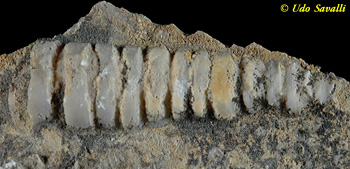
|
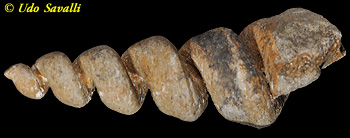
|
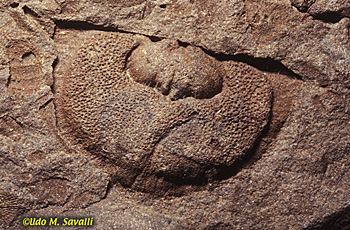
|
|
Internal mold of a nautiloid mollusk
|
Internal mold of a Turritella snail
|
Internal mold of a brachiopod
|
|
Mineralization
| Permineralization: minerals form in the internal spaces of porus material such as bone or wood
|
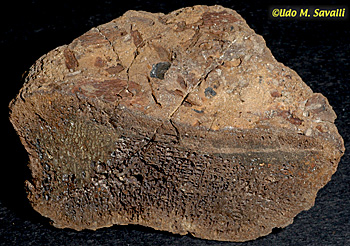
|
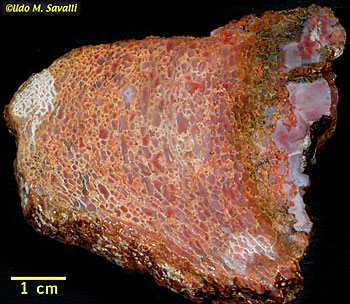
|
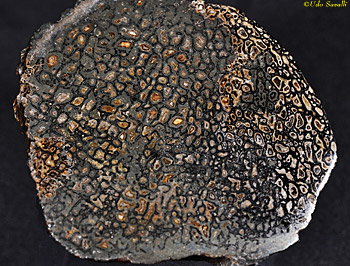
|
|
Cut section of a Hadrosaur vertebra revealing internal structure
|
Dinosaur bone piece, cut and polished
|
Cut and polished piece of Iguanodon dinosaur bone
|
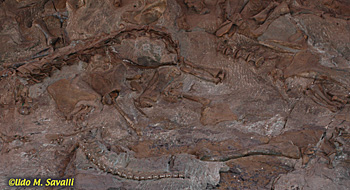
|
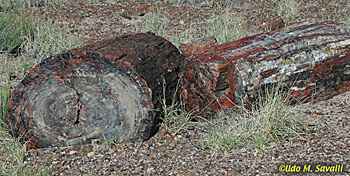
|
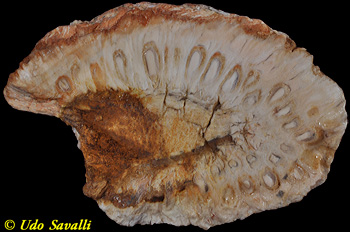
|
|
Stegosaurus bones in situ at Dinosaur Nat. Mon., UT
|
Petrified logs at Petrified Forest Nat. Pk., AZ
|
Araucaria cone, cut in half; unlike casts, permineralization can preserve internal structures
|
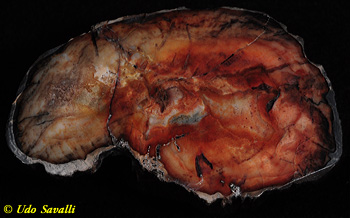
|
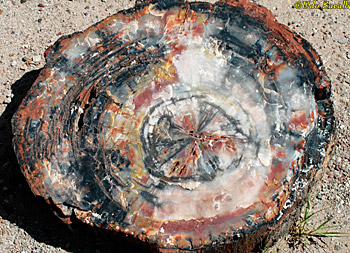
|
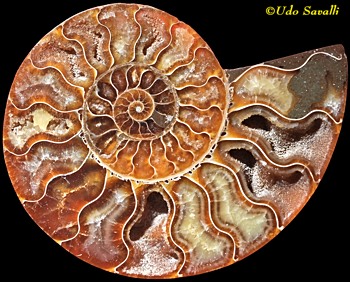
|
|
Polished slice of petrified wood
|
Petrified wood log in situ (meaning in its original place)
|
Ammonites, such as this Cleoniceras, have sealed, internal chambers in which minerals form by crystallizing out of solution (similar to permineralization, but with much larger cavities), often forming geode-like crystals.
|
Replacement Mineralization: mineral content of shells and other tissues is replaced by different minerals
|
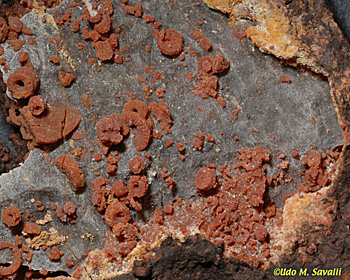
|
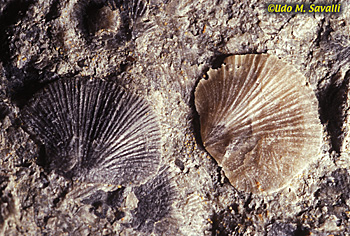
|

|
|
These mineralized crinoid stem sections were exposed by dissolving the matrix in acid
|
Mineralized brachiopod shells; note different color and texture from the surrounding matrix
|
The shell of this Elimia snail has been replaced by agate
|
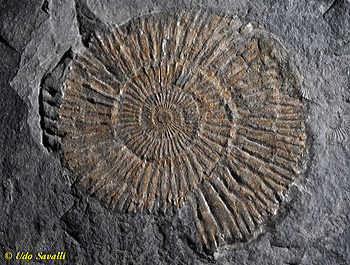
|
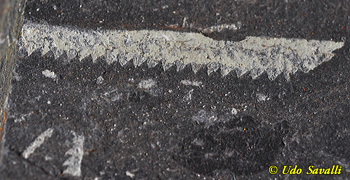
|
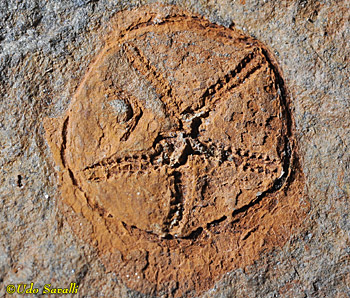
|
|
The shell of this Dactylioceras ammonite has undergone replacement mineralization, but the entire fossil is flattened and has lost most of its 3-D shape
|
The organic material of this graptolite (a colony of tiny marine invertebrates) was replaced by minerals that left a white film on the rock
|
The organic material of this edrioasteroid (an extinct relative of sea stars) was replaced by iron-containing minerals that impart an orange color. It probably started to decompose and leak out, accounting for the expanded stain at the bottom of the photo.
|
Concretions: minerals precipitate around decomposing remains
|
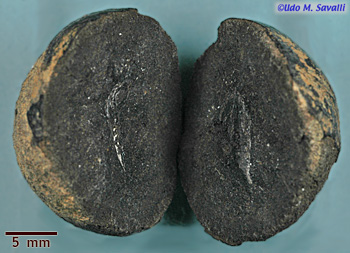
|
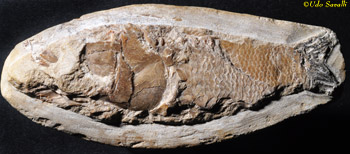
|
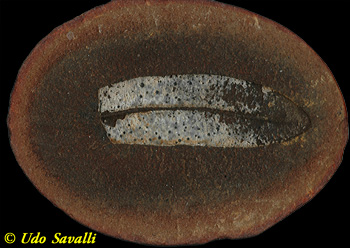
|
|
Concretions result from minerals precipitating around decomposing remains; this one has been split open to reveal an unidentified fossil. The fossils may be preserved as molds and casts or by mineralization
|
This fish is preserved within a concretion. Its 3-dimension shape is preserved as a cast, but its scales have also been mineralized
|
This leaflet from a seedfern is preserved within a concretion. It has undergone replacement mineralization, with the soft organic material replaced by a white mineral
|
Mixed Fossilization Methods
|
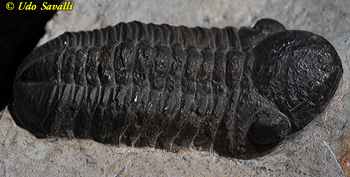
|
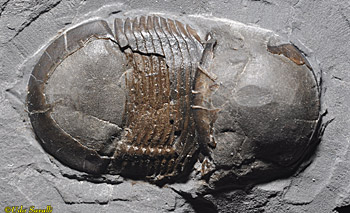
|
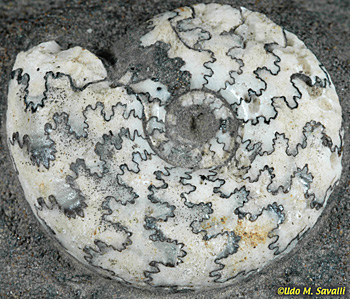
|
|
The 3-dimensional shape of this Reedops trilobite was preserved through the mold and cast process, but its thin cuticle (exoskeleton) underwent replacement mineralization to produce the dark color. Internal structures are not preserved.
|
The mineralized shell (dark brown) of this Bumastus trilobite has flaked way from the head and part of the tail section (left side of image), revealing the gray matrix cast beneath.
|
In this Craspedites ammonite, the internal shell divisions have been replaced by a dark-colored mineral mineral, and the empty internal chambers are filled with a white mineral
|
|
Carbonization
Compression, heat and pressure drive away lighter, more volatile atoms, leaving behind a film of carbon. Commonly observed in plant fossils as well as some animal fossils
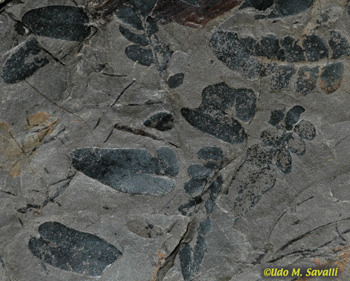
|
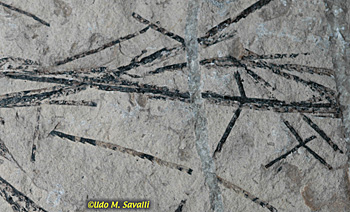
|
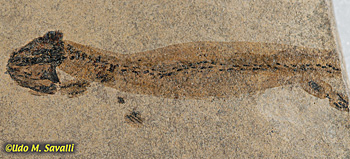
|
|
Carbon films of seed fern fronds
|
Graptolites (small worm-like animals that form colonies that look like hack-saw blades; each 'tooth' is an individual animal)
|
A thin carbon film has produced the body outline of this aquatic amphibian
|
|
Unaltered Remains
More recent fossils such as shells and teeth may be relatively little altered and still contain much of their original mineral content. Generally, they are still considered fossils if they are more than 10,000 years old.
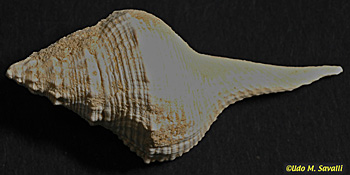
|
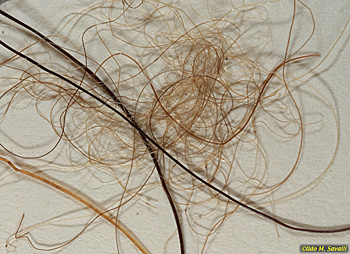
|
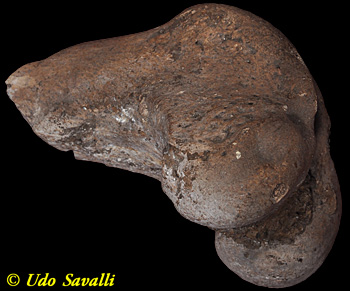
|
|
More recent fossils such as shells and teeth may be relatively little altered and still contain much of their original mineral content, such as this whelk
|
Ice can preserve organic material for thousands of years, such as this wooly mammoth hair from Siberia
|
This piece of dire wolf femur from the La Brea tar pits. The tar perfectly preserves the bones so that most of its original mineral content is still intact, despite being between 10 - 40 thousand years old
|
|
|
The sections above categorize (body) fossils by the ways they were formed. Below, fossils are categorized by what they represent: dead remains, actions and behaviors, or chemical traces.
|
Body Fossils
Body fossils are any kind of fossil that preserves evidence of the anatomy of past life. All of the fossils described above are body fossils. For vertebrates such as dinosaurs, the most common type of body fossil are permineralized bones, but can also include molds and casts, such as skin impressions.
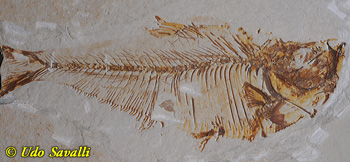
|
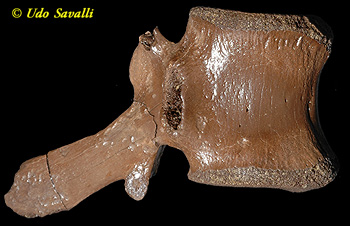
|
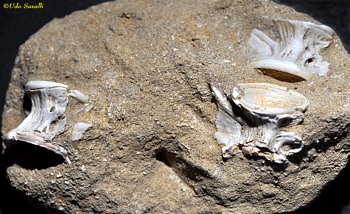
|
|
Articulated skeletons, such as this Diplomystus fish, are preserved with all (or at least most) of the bones in the position they had in life. It requires rapid burial before scavengers or the elements can scatter the parts.
|
Disarticulated skeletons (where the bones have separated from each other and moved) and isolated bones provide less information, but are more common than articulated skeletons. Vertebra of the dinosaur Thescelosaurus.
|
Bones that are found near each other but not articulated, such as these vertebrae from the fish Enchodus, are considered associated. Associated remains may come from the same animal, but sometimes may result from the accumulation of parts from multiple individuals
|
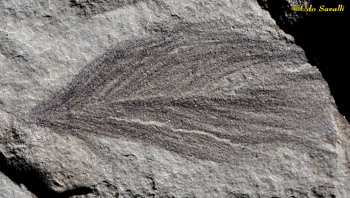
|
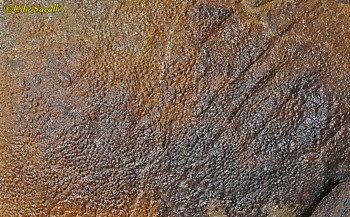
|
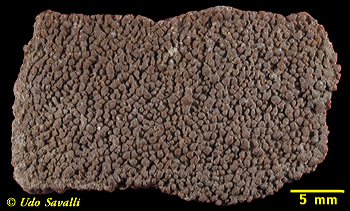
|
|
Body parts, such as this individual bird feather, are also body fossils
|
Skin impressions, such as this from the dinosaur Edmontosaurus, are another example of body fossils
|
Eggs and egg shells, such as this fragment from a titanosaur egg, are also considered body fossils
|
|
Trace Fossils
Trace fossils (also called ichnofossils) are indirect evidence of the presence of animals that preserves evidence of their behavior. Trace fossils include tracks, burrows, coprolites (fossil feces), and feeding (bite) marks
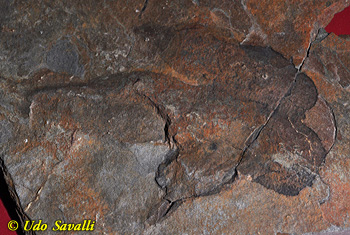
|
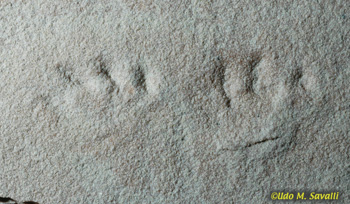
|
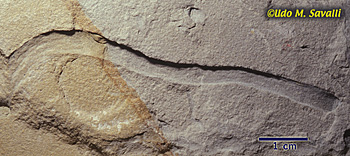
|
|
Footprint of a theropod (predatory) dinosaur. The print is named Grallator but it is unknown exactly which dinosaur made it
|
These tracks, called Cheilichnus, were made by a small "mammal-like reptile" in Arizona 260 million years ago
|
This burrow was likely made by a marine worm
|
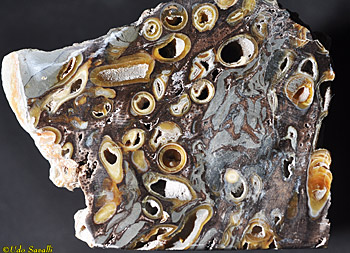
|
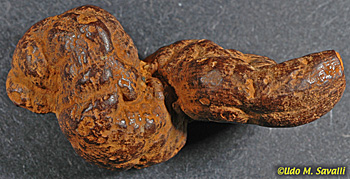
|
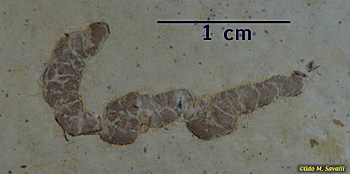
|
|
The holes in the petrified wood were made by shipworms, a worm-like burrowing clam. The holes (burrows) are trace fossils, although the wood itself is a body fossil
|
The coprolite (fossilized feces) of an unknown mammal
|
The coprolite of a fish
|
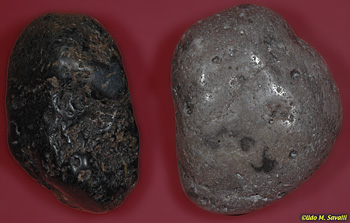
|
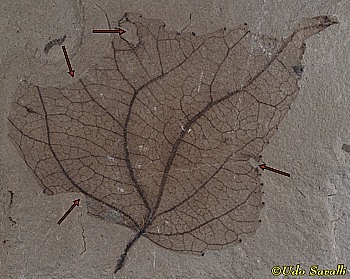
|
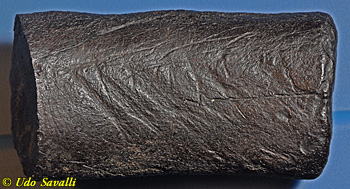
|
|
Gastroliths ("stomach stones") are rocks that have been swallowed by animals to aid digestion by helping to grind up food (or for buoyancy in aquatic animals); they are recognized by their smooth contours and location in the gut region of dinosaur fossils
|
Poplar leaf, Populus wilmattae (body fossil), with insect damage (arrows; trace fossil)
|
Dugong rib (body fossil) with shark tooth marks (trace fossil)
|
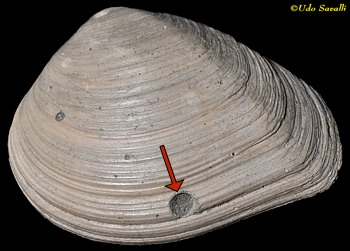
|
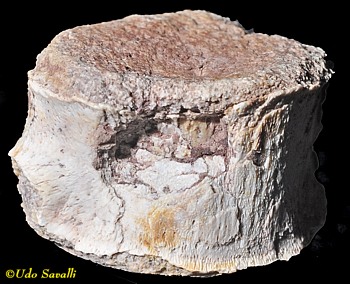
|
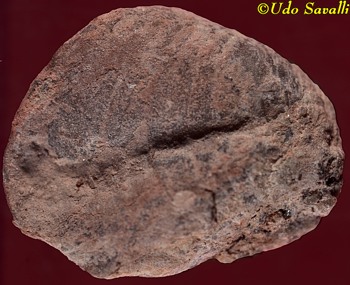
|
|
Fossil clam with hole (arrow) made by predatory snail
|
Apachesaurus (amphibian) vertebra with a single tooth mark from a predator (possibly a phytosaur)
|
Brachiopod (clam-like shelled animal) with groove from a bite, possibly from a cephalopod (squid relative)
|
|
Chemical Fossils
Chemical fossils preserve the chemical traces of past life without preserving any structure

|
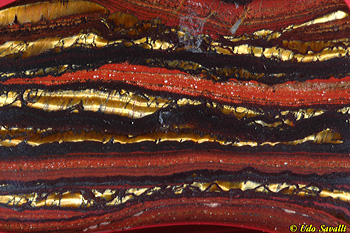
|
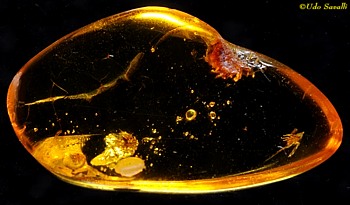
|
|
Coal is an example of a chemical fossil derived from peat, the partially decomposed bodies of plants
|
The alternating red and dark layers in banded iron formation was produced by periods of presence or absence of microbes such as cyanobacteria that altered chemical reactions in ancient marine sediments
|
Amber is a chemical fossil derived from the resin or sap of certain trees. In addition, amber can also contain body fossils of small plants and animals that became trapped in the amber, such as these insects (insets)
|
|
Microfossils
Microfossils are any fossils of the above types that are very small and often require a microscope to observe. Examples include the shells from protozoans (such as diatoms), small animals or animal parts (such as teeth), pollen, seeds, etc. Microfossils are often useful in determining the type of environment and as indicator fossils for aging rocks.
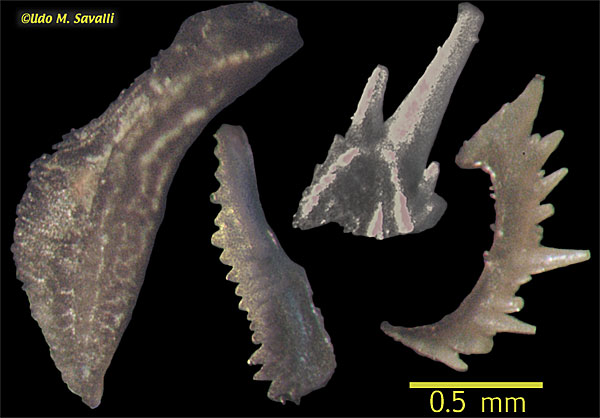
|
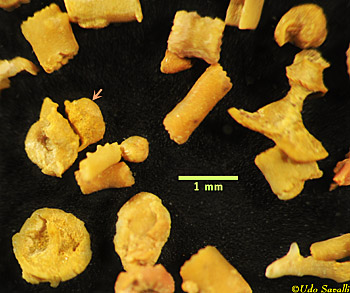
|
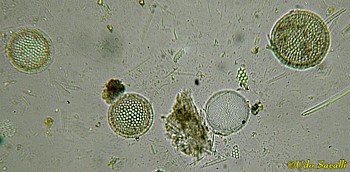
|
|
|
These conodonts are examples of microfossils. Conodonts are mouth-parts from tiny jawless fishes.
|
A microfossil sample containing mostly foraminifera (microscopic protozoans with shells) along with an ostracod (a tiny seed shrimp, arrow)
|
Diatomaceous earth is composed of billions of microscopic fossils of diatoms, a type of single-celled algae that forms silica shells
|
|
|
Pseudofossils
Pseudofossils are rock patterns or shapes that look like fossils but are produced by chemical or geological processes and do not represent organisms. They can fool unwary collectors.
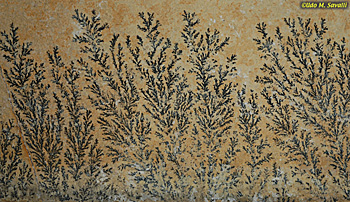
|
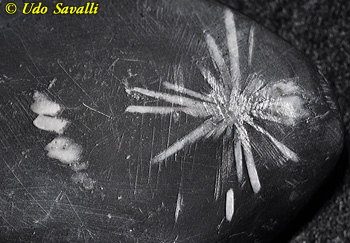
|
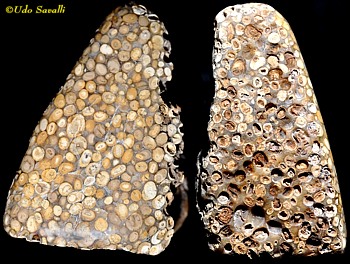
|
|
These superficially plant-like patterns are called dendrites and are caused by the mineral Manganese Oxide seeping into the limestone.
|
This flower-like pattern is a mineral deposit called chrysanthemum stone and thus it is a Pseudofossil rather than a true plant fossil.
|
Oolites are rocks composed of grains that gradually accumulate layers. When cut, the ringed cross sections can look like biological structures. this image shows the polished and unpolished sides of the same oolite
|
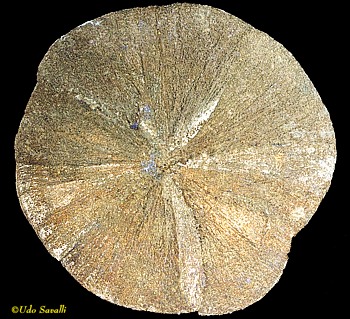
|
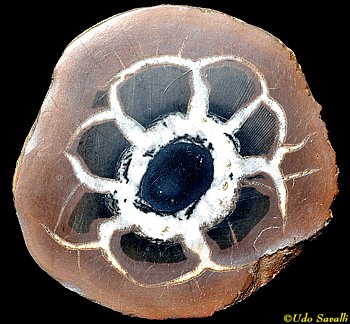
|
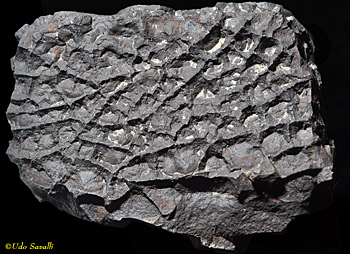
|
|
Pyrite suns are disk-shaped mineral accretions associated with coal deposits that resemble sand dollars
|
Septarian nodules form when water carrying dissolved minerals seeps into cracks and deposits minerals.
|
The ridges on some septarian nodules, such as this composed of the mineral siderite, can look remarkably like skin impressions
|
|
|




































































